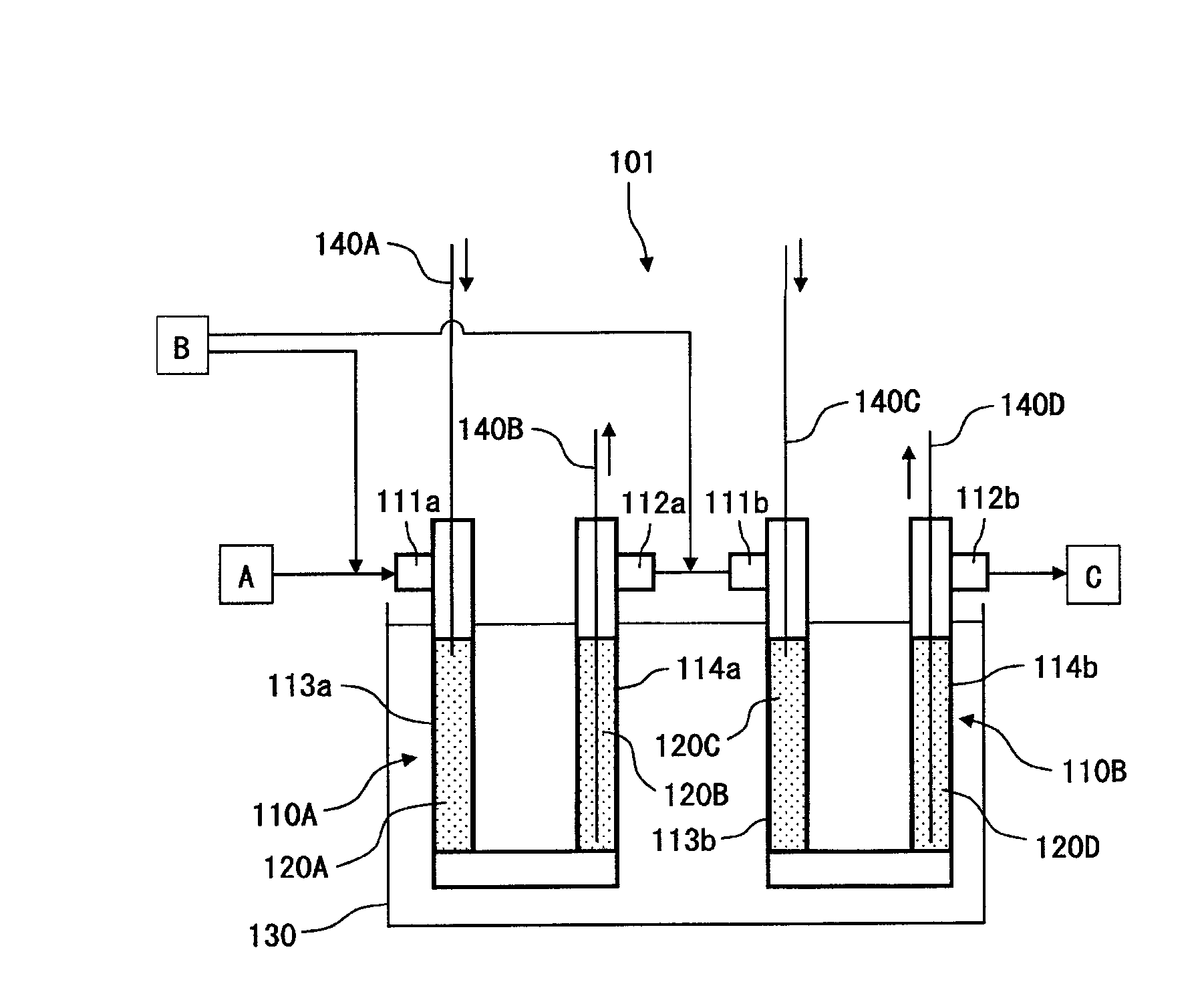Process for producing 2,3,3,3-tetrafluoropropene
a technology of tetrafluoropropene and tetrafluoropropene, which is applied in the field of process for producing 2, 3, 3, 3tetrafluoropropene, can solve the problems of excessive reduction, and achieve the effect of suppressing the formation of excessive reduction of the product hfc-254eb
- Summary
- Abstract
- Description
- Claims
- Application Information
AI Technical Summary
Benefits of technology
Problems solved by technology
Method used
Image
Examples
examples
[0057]Now, the present invention will be described in further detail with reference to
[0058]Examples and Comparative Examples. However, it should be understood that the present invention is by no means restricted by the following description. Examples 1 to 3 are working Examples of the present invention and Examples 4 and 5 are Comparative Examples.
example 1
[0059]For the production of HFO-1234yf (CF3CF═CH2), a reaction apparatus 101 shown in FIG. 1 was used.
[0060]As shown in FIG. 1, the reaction apparatus 101 is provided with two reaction tubes 110A and 110B and a salt bath 130 for immersion of such reaction tubes 110A and 110B. The reaction tube 110A has catalyst-packing portions 113a and 114a at two positions on the inlet 111a side and the outlet 112a side. Likewise, the reaction tube 110B has catalyst-packing portions 113b and 114b at two positions on the inlet 111b side and the outlet 112b side. The outlet 112a of the reaction tube 110A is connected by piping to the inlet 111b of the reaction tube 110B.
[0061]As the reaction tubes 110A and 110B, reaction tubes made of Inconel (registered trademark) 600 and having an inner diameter of 2.54 cm and a length of 100 cm, were used. Further, as a catalyst, a catalyst having 0.5 mass % of palladium supported on coconut shell active carbon, was used, and such a catalyst was packed in the cat...
example 2 and 3
[0067]Formed gas (C) was obtained in the same manner as in Example 1 except that the ratio (H2 / Cl) was changed as shown in Table 1.
PUM
| Property | Measurement | Unit |
|---|---|---|
| temperature | aaaaa | aaaaa |
| length | aaaaa | aaaaa |
| boiling point | aaaaa | aaaaa |
Abstract
Description
Claims
Application Information
 Login to View More
Login to View More - R&D
- Intellectual Property
- Life Sciences
- Materials
- Tech Scout
- Unparalleled Data Quality
- Higher Quality Content
- 60% Fewer Hallucinations
Browse by: Latest US Patents, China's latest patents, Technical Efficacy Thesaurus, Application Domain, Technology Topic, Popular Technical Reports.
© 2025 PatSnap. All rights reserved.Legal|Privacy policy|Modern Slavery Act Transparency Statement|Sitemap|About US| Contact US: help@patsnap.com

